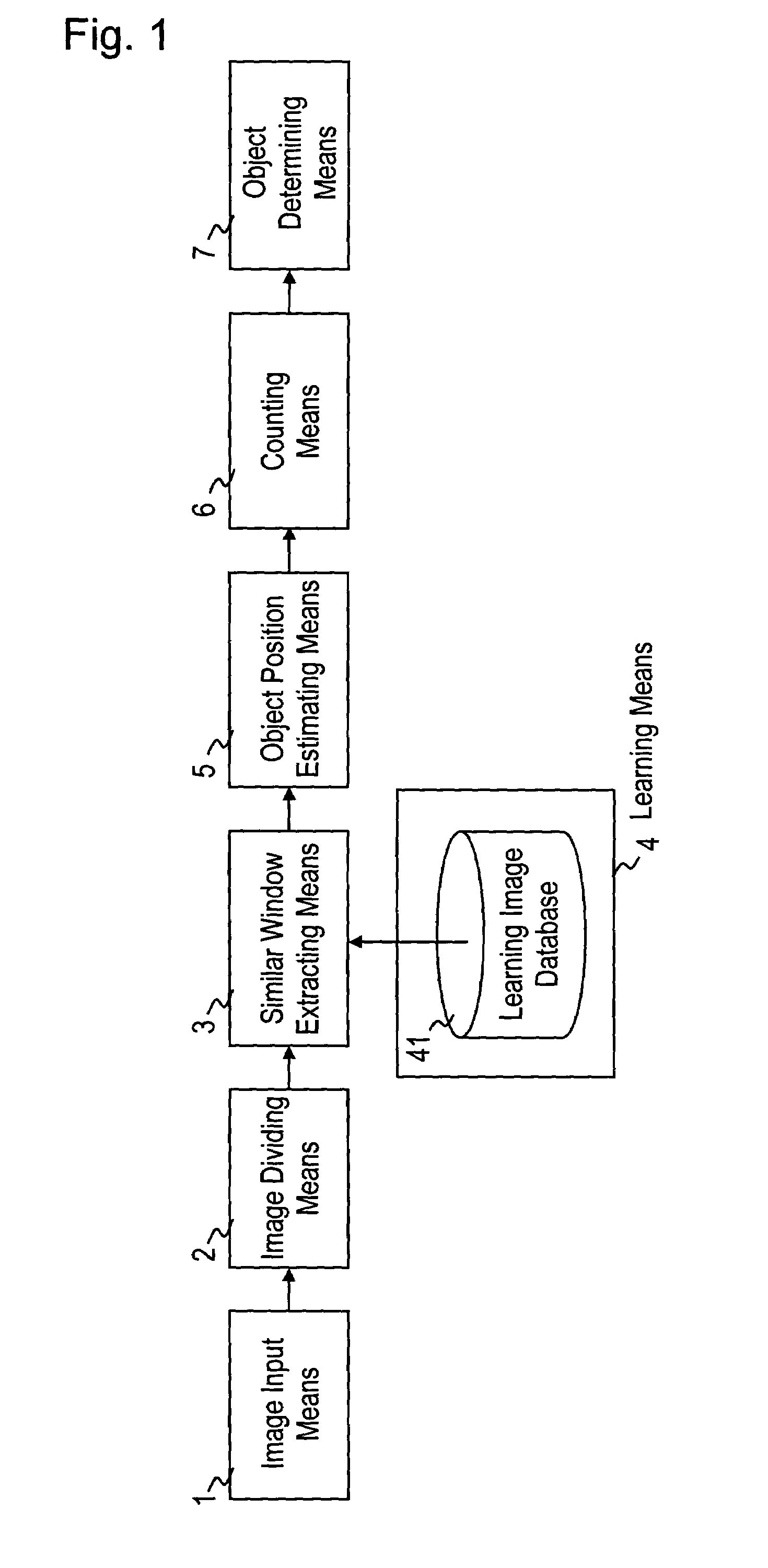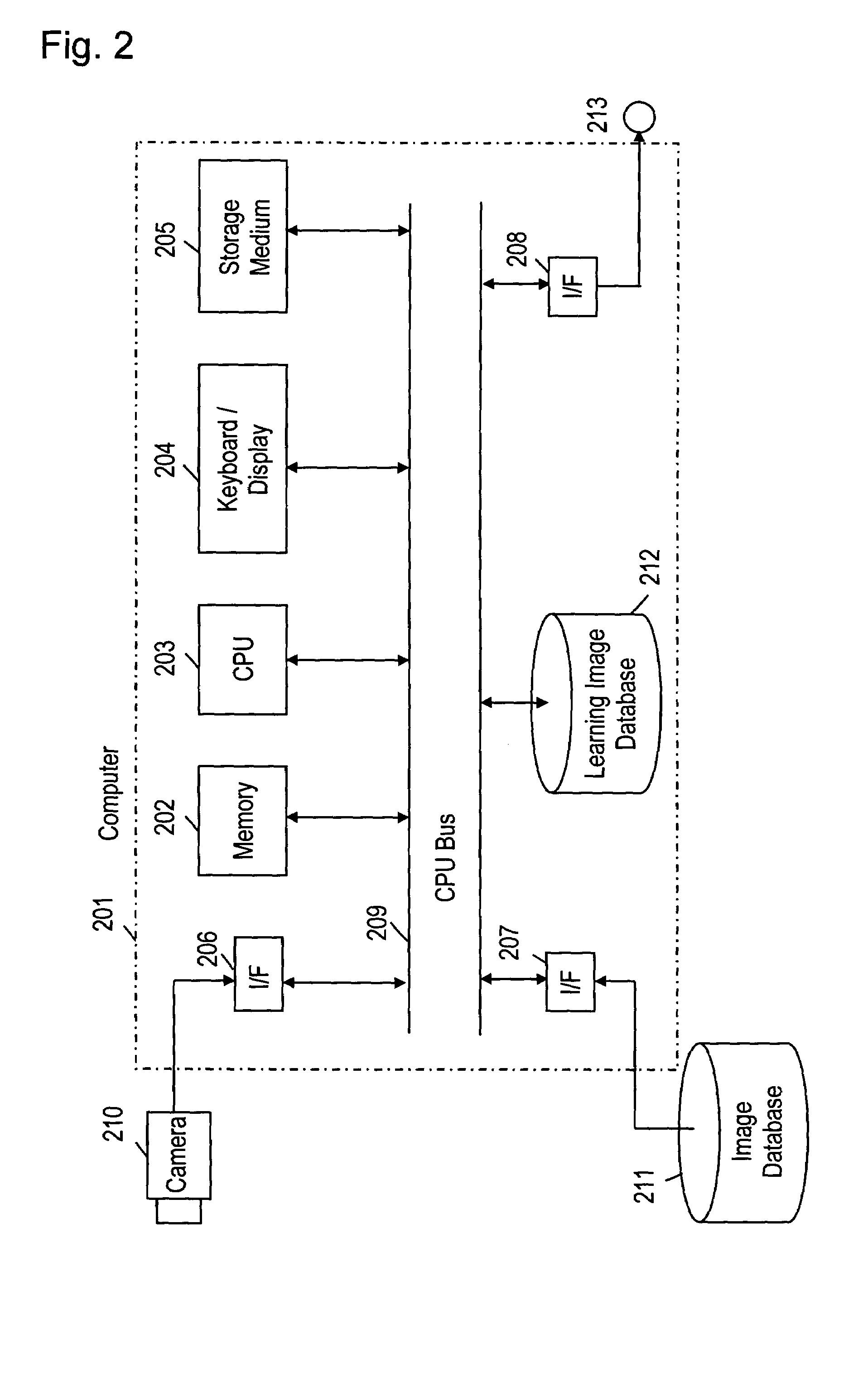Apparatus and method for image recognition
a technology of image recognition and apparatus, applied in the field of apparatus and method for image recognition, can solve problems such as difficulty
- Summary
- Abstract
- Description
- Claims
- Application Information
AI Technical Summary
Benefits of technology
Problems solved by technology
Method used
Image
Examples
embodiment 1
[0083]FIG. 1 is a block diagram of an image recognizing apparatus according to Embodiment 1 of the present invention. Image input means 1 receives image data of an object to be identified. Image dividing means 2 divides the image received by image input means 1 into input windows as local-segments. Similar window extracting means 3 retrieves, from a database, the data of a learning window which is similar to the local window from image dividing means 2, and releases the learning window with its corresponding local window as the learning-local-segments. Learning means 4 preliminarily generates an image model of the object to be identified. Learning image database 41 divides a learning image, which is a model image of an object to be identified, into windows having the size as the local window from image dividing means 2 and stores them as learning windows. Object position estimating means 5 calculates the position of the object in the input image from the position of the learning win...
embodiment 2
[0092]FIG. 8 is a block diagram of an image recognizing apparatus according to Embodiment 2 of the present invention. Image input means 801 receives image data of an object to be identified. image dividing means 802 divides the image data supplied from the image input means 801 into an input window as local-segments and releases the input window data. Similar window extracting means 803 retrieves learning window (learning-local-segment) data, which is similar to the input local window data divided by image dividing means 802, from a database and releases it together with the corresponding input local window data. Learning means 804 preliminarily generates a model of the object to be identified. Learning image database 841 divides a learning image, which represents the model of the object to be identified, into learning windows having the same size as the input windows generated by image dividing means 802 and stores the learning windows. Similar window integrating unit 842 makes a g...
embodiment 3
[0102]FIG. 14 is a block diagram of an image recognizing apparatus according to Embodiment 3 of the present invention. Image input means 1401 receives image data of an object to be identified. Image dividing means 1402 divides the image data supplied from image input means 1401 into input windows as local-segments and releases the input windows. Similar window extracting means 1403 retrieves one similar learning window (learning—local-segment) to each input local window released by image dividing means 1402 from each learning database and releases it together with the corresponding input local window data. Learning means 1404 preliminarily generates a model of the object which corresponds to different categories to be identified. By-character learning image databases 1441, 1442, . . . divide a learning image which represents the model of the object to be identified into learning windows having the same size as the input windows determined by image dividing means 1402, and store the ...
PUM
 Login to View More
Login to View More Abstract
Description
Claims
Application Information
 Login to View More
Login to View More - R&D
- Intellectual Property
- Life Sciences
- Materials
- Tech Scout
- Unparalleled Data Quality
- Higher Quality Content
- 60% Fewer Hallucinations
Browse by: Latest US Patents, China's latest patents, Technical Efficacy Thesaurus, Application Domain, Technology Topic, Popular Technical Reports.
© 2025 PatSnap. All rights reserved.Legal|Privacy policy|Modern Slavery Act Transparency Statement|Sitemap|About US| Contact US: help@patsnap.com



